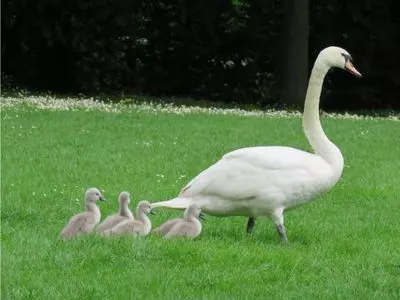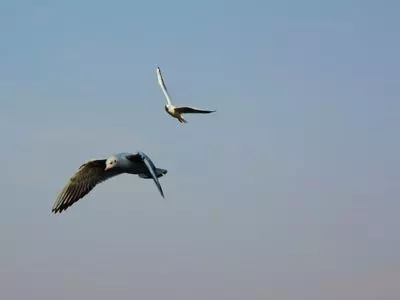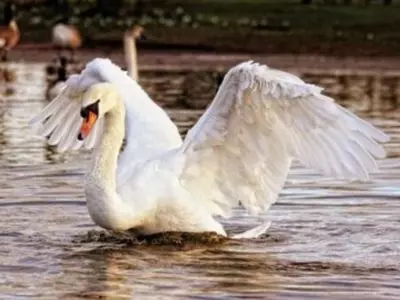No products in the cart.
Geese
What is the Difference Between a Goose and a SWAN?
Is a swan and a goose the same thing?
While swans and geese are both waterfowl, they aren’t the same kind of bird and do have some distinct differences.
This blog post will discuss the differences between geese and swans.
So if you want to learn more about these two exciting birds, keep reading!
*This post may have affiliate links, which means I may receive commissions if you choose to purchase through links I provide (at no extra cost to you). As an Amazon Associate I earn from qualifying purchases. Please read my disclaimer for additional details.
What is the Difference Between a Goose and a Swan?

Waterfowl are members of the Anatidae family, which includes ducks, geese, and swans.
Let’s get into the differences between geese and swans.
Size
The size of a goose can vary depending on the species, but they are generally smaller than swans.
A male usually weighs between 9 and 14 pounds, while a female goose typically weighs 6 to 10 pounds.
In contrast, a male swan can weigh up to 20 pounds, and a female swan can weigh up to 30 pounds.
Wingspan
Swans are also generally more prominent than geese in terms of wingspan.
A goose has a roughly 4.5 to 6-foot wingspan, while a swan’s wingspan can range from 6.5 to 8 feet.
So, if you’re wondering whether that bird you’re seeing is a goose or a swan, size is one way to tell them apart.
Habitat
Another way to tell the difference between a goose and a swan is by looking at their habitat.
Geese are found throughout the world in both fresh and saltwater habitats.
They can be found in North and South America, Europe, Asia, and Africa.
On the other hand, Swans are found mainly in the Northern Hemisphere.
They are native to Europe, Asia, and North America.
In addition to their different geographical ranges, geese and swans also occupy different types of habitats.
Geese prefer wetlands, such as marshes and ponds. Swans prefer open water areas, such as lakes and rivers.
Finally, while a goose can be found in a group of geese, swans are more likely to live in pairs or alone.
Neck
One of the most noticeable differences between a goose and a swan is the shape of their necks.
A goose has a shorter neck curved in a “U” shape, while a swan’s neck is much longer and has a distinct “S” shape.
A goose has 14 cervical (neck) vertebrae, while a swan has 18 cervical vertebrae.
The extra vertebrae in a swan’s neck allow them to hold its head up high and gracefully and extend its neck while in flight.
The long neck also gives them a more excellent range of motion when swimming, allowing them to reach food that might be out of reach for other water birds.
Behavior
Though they may look similar at first glance, there are several key ways in which geese and swans differ in their behavior and habits.
For one, swans tend to be much more graceful and elegant in their movements than geese, which can appear somewhat awkward by comparison.
In addition, swans usually mate for life, while geese often find a new mate if their original partner dies.
Lastly, swans are generally quite shy around humans, while geese can be aggressive and even attack if they feel threatened.
Read our related article, Why Are Geese so Aggressive? to learn more about this behavior.
Lifespan

Swans and geese are long-lived waterfowl.
Most swans have a lifespan of 20 to 30 years, although some have been known to live much longer.
On the other hand, geese have shorter lifespans, with most only residing for 10 to 12 years.
Some domesticated geese have been known to live even longer, with some reaching 20 years or more.
Whatever the reasons, swans, and geese are two of the longest-lived waterfowl species, providing years of enjoyment for birdwatchers and nature lovers alike.
Similarities Between Geese and Swans
Aside from the differences, there are also a few notable similarities between swans and geese:
- Both geese and swans are waterfowl, meaning they live near or on the water. This can be a lake, river, pond, or other body of water.
- Geese and swans are both able to swim and float on water. They use their webbed feet to paddle through the water.
- When in flight, they extend their necks and hold their legs close to their bodies so they can save energy
- They are both omnivores, meaning they consume plant life and animal life, such as insects and fish.
Read More: How to Attract Canada Geese to Your Pond. Liven up your pond with a flock of geese! Here’s how.
What Do They Eat?
Geese and swans are both omnivores, so they will eat both plant life and animals such as insects or fish.
Leaves, stems, and roots of aquatic plants are their primary food source, but they will also eat small insects, larvae, and snails.
Swans and geese may eat bread and other man-made foods in heavily populated areas.
Swans and geese typically forage for food in shallow waters or on land.
They use long necks to reach the water or pull plants from the ground or fish for small creatures.
Their webbed feet help them swim with ease and walk on muddy ground without sinking.
Here is a great video showing a bit more about geese:
Read our related article, ‘Do Geese Eat Fish?’ to see which types of fish are preferred and how they catch them!
Conclusion
Ultimately swans and geese can indeed look similar due to their specific characteristics. With that being said, there are some major differences that will help you distinguish which one you’re looking at.
Next time you come across a beautiful bird like this be sure to refer back here to figure out whether it’s a goose or a swan!
